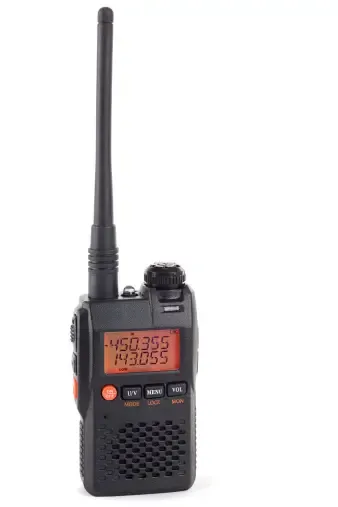
Send Inquiry
What is Ham Radio and How Does Ham Radio Work?
Ever wondered about ham radio? In a world where radio might seem a bit old-school, ham radio, or amateur radio, is a hidden gem for radio enthusiasts. Let's explore what ham radio is, its history, how it works, its uses, and how you can get started.
What is Ham Radio?
Ham radio, or amateur radio, is all about using radio frequencies for non-commercial messages, wireless experiments, self-training, private fun, radiosport, contests, and emergency communication. It's not about making money; it's a hobby that brings people, electronics, and communication together. Whether chatting across town or reaching into space, ham radio is a social, educational, and helpful pastime.
History of Ham Radio
The roots of amateur radio go back to the 19th century when "ham" was a term used to tease operators with poor Morse code skills. Despite the early mockery, amateur radio enthusiasts contributed significantly to science and social services. By the mid-20th century, the negative connotation of "ham" disappeared, and ham radio became a respected hobby.
How Does Ham Radio Work?
Anyone from doctors to kids can be amateur radio operators. They need basic radio knowledge and an FCC license. This license lets them use specific radio frequencies, known as "Amateur Bands." Whether through Morse Code, voice, or computerized messages, hams communicate across various bands, from just above the AM radio band to the microwave region.
Hams often engage in two-way conversations, different from traditional radio. They use repeaters to extend the range of their handheld radios. Ham radio operates without internet or cell phone networks, making it a reliable communication tool, especially during emergencies.
Uses of Ham Radio
Ham radio is not just a hobby; it plays a crucial role in emergencies. When traditional communication fails, amateur radio operators step in. They aided in communication after 9/11, Hurricane Katrina, and floods in Colorado. Hams can connect with astronauts in space, other hams via satellites, or bounce signals off the moon.
How to Get Started with Ham Radio?
To begin, get an amateur radio license from the FCC. Licenses last 10 years and can be renewed online. There are different license classes, starting with Technician Class, which requires passing a written exam. The higher classes, General and Amateur Extra, offer more privileges.
Choosing equipment depends on your preferences. Older transceivers can work well for beginners, and HF transceivers with 100 watts output are a good starting point. Joining organizations like the American Radio Relay League (ARRL) can provide additional support and advice.
In a world where technology evolves rapidly, ham radio stands as a timeless, reliable means of communication, connecting people across the globe.
What Frequencies Do Ham Radios Operate On?
Ham radios cover a range of frequencies, starting slightly above the AM spectrum at 1.6 MHz and extending up to 1240 MHz. The effectiveness of these frequencies for long-distance communication varies with the time of day.
The FCC has allocated three primary bands for communication, and the choice depends on your specific goals:
1. Very High Frequency (VHF)
Ham radio enthusiasts can use frequencies between 144 and 148 MHz within the VHF band. These frequencies are excellent for interference-free communication with other ham radio users, especially when avoiding external electrical disruptions. However, they don't match the quality and distance range of UHF.
2. Ultra High Frequency (UHF)
Operating between 420 and 450 MHz, UHF offers a broader spectrum of quality and an extended range compared to VHF. Despite these advantages, users may encounter more interference.
3. Microwave Frequencies
Those delving into microwave frequencies work within the range of 1.8 to 250 GHz. While this area is somewhat niche for ham radio enthusiasts, using microwave frequencies enables unique practices like "moon bouncing," where transmissions bounce off the moon for communication.
Conclusion
In essence, ham radio transcends being a mere hobby; it's a dynamic portal connecting individuals across the world. From its historical roots as a term of mockery to becoming a vital force in emergencies, ham radio stands as a testament to the enduring power of communication. Understanding how ham radio works reveals a simple yet profound truth – in a world buzzing with high-tech innovations, the simplicity of radio waves, Morse Code, and two-way conversations still holds an undeniable charm. It's a reminder that amidst the complexity of modern life, the timeless art of connecting with others remains as powerful as ever through the magic of ham radio.

